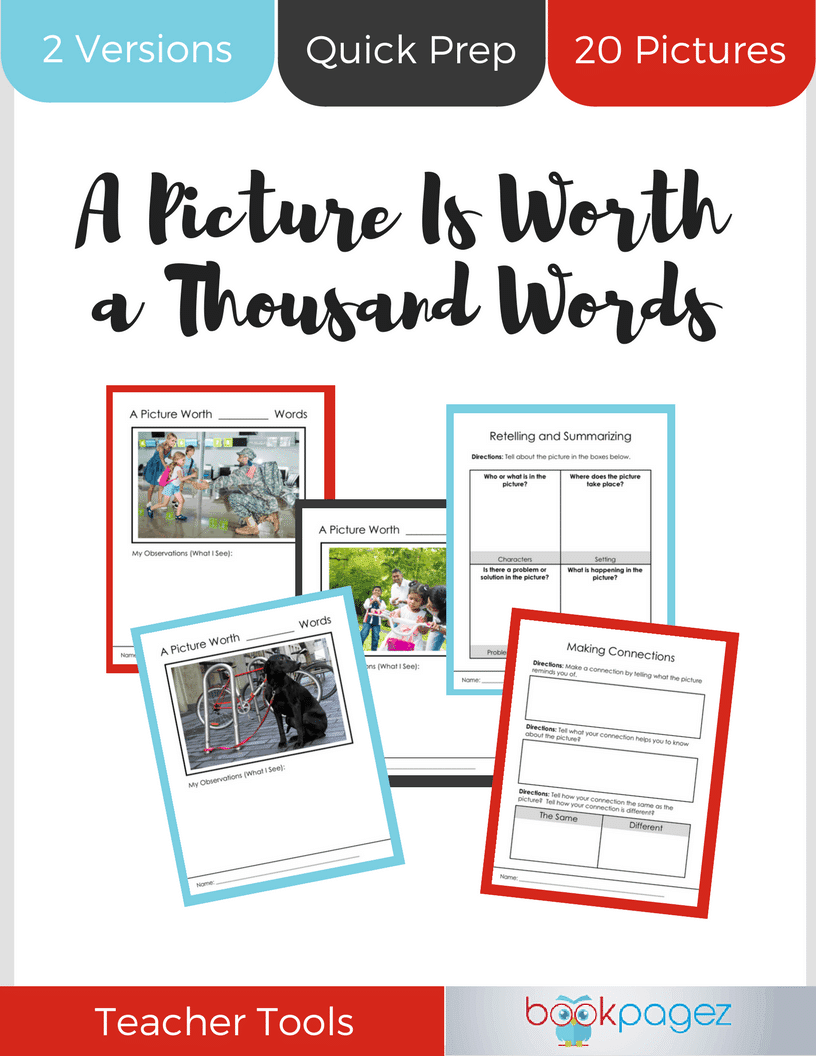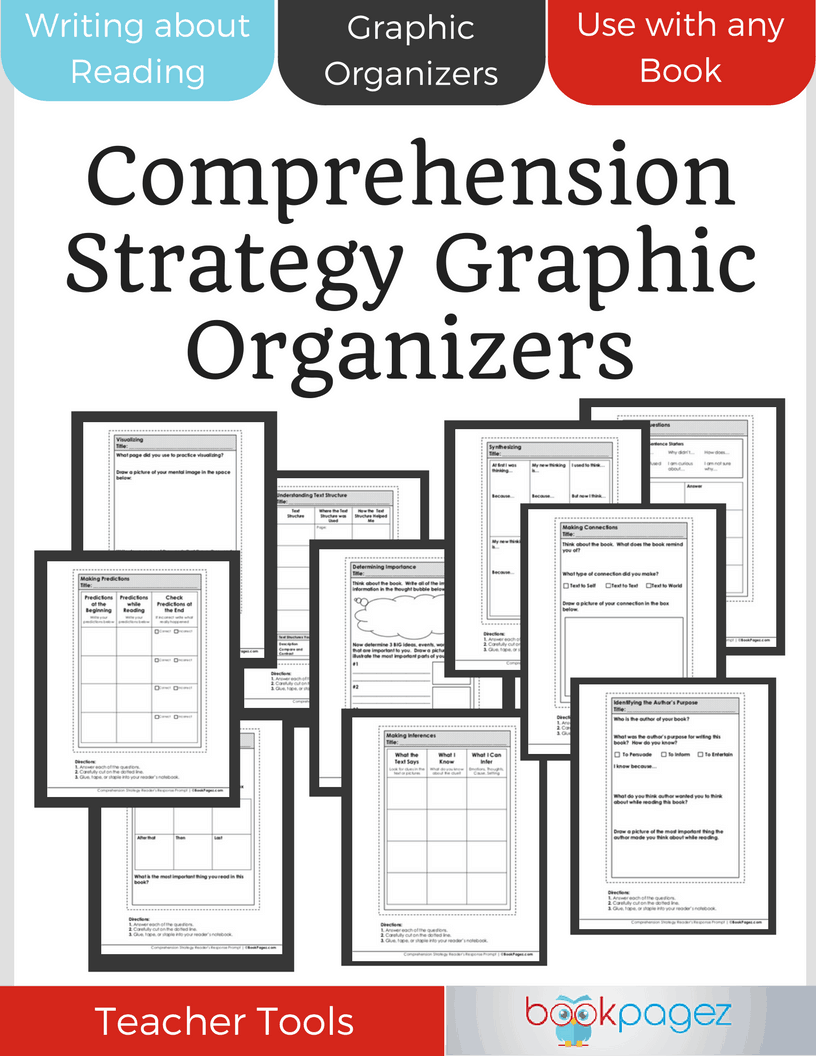3 Teacher-Approved Comprehension Tools to Use with Popular Read-Alouds
Looking for easy ways to boost comprehension during read-alouds? These 3 teacher-tested tools from BookPagez help K–5 students think, talk, and make meaning—without worksheets or strategy overload.

Comprehension isn’t built through isolated strategy drills—it’s built through thinking, conversation, and experience. That’s why the best tools don’t just tell students what to do. They give them space to notice, wonder, and make sense of what they’re reading.
If you're looking for practical, Science of Reading-aligned ways to support comprehension in your classroom, these tools can help. Each one pairs seamlessly with a popular picture book and encourages the kind of critical thinking that leads to lasting understanding.
Here are three simple ways to pair BookPagez comprehension tools with popular read-alouds—so your students can build real understanding in every lesson.
Use A Picture Is Worth a Thousand Words with The Snowy Day to Help Readers Make Meaning from Illlustrations
Before reading The Snowy Day by Ezra Jack Keats, try inviting your students to make meaning from one of its quietest moments: Peter watching the snow fall outside his window.
This kind of illustration is perfect for launching a conversation about what students see, what they think is happening, and how they know. And it pairs beautifully with the graphic organizers included in A Picture Is Worth a Thousand Words.
Try projecting one of the wordless spreads—like the moment when Peter watches the snow fall from his window. Pause there. Then ask your students:
What do you notice?
What might Peter be thinking or feeling?
What do you think happened just before this moment?
What might happen next?
Now, instead of just discussing, invite students to record their thinking using one of the graphic organizers from A Picture Is Worth a Thousand Words. These aren’t generic worksheets—they’re structured tools that guide students through real comprehension processes like:
- Asking questions
- Making predictions
- Making inferences
- Summarizing what’s happening
- Determining what’s most important
Each organizer comes in two versions—one for lower elementary and one for upper elementary—so students at every level can access the same thinking in a way that works for them.
This kind of work mirrors what the Science of Reading tells us: comprehension isn’t about isolated strategies. It’s about helping students process information, build language, and organize ideas in a meaningful way—starting with something as accessible as a picture.
Whether you’re introducing comprehension or deepening it, this resource helps students build the habits of thought they’ll carry into every text they read.
Support Nonfiction Comprehension with Graphic Organizers and National Geographic Kids Rocks and Minerals
Nonfiction books like National Geographic Kids Rocks and Minerals are packed with facts, features, and new vocabulary—all great building blocks for comprehension.
Before you begin reading, choose one key area to focus on with your students:
- Identifying main ideas
- Noticing text features
- Tracking new vocabulary
- Asking and answering questions
As you read aloud, pause to model how good readers process nonfiction. You might ask:
- What is the main idea of this section?
- What text features help you understand the information?
- What new word did you just learn?
- What question do you have after reading this page?
After the read-aloud, invite students to record their thinking using one of the nonfiction graphic organizers from the BookPagez Nonfiction Comprehension Strategy Graphic Organizers resource.
This set includes multiple organizer styles designed specifically for nonfiction texts—and it comes with two versions of each organizer:
- One in English
- One in Spanish
That makes it easy to differentiate instruction and support your Spanish-speaking students while keeping the focus on comprehension and content.
Using these organizers isn’t about filling in blanks—it’s about helping students organize information, interact with text features, and build the background knowledge and language skills that Science of Reading research tells us are critical for comprehension.
Whether you’re working with a whole class, small group, or individual students, these tools help make nonfiction thinking visible.
Use Comprehension Strategy Graphic Organizers with Lilly’s Purple Plastic Purse to Make Student Thinking Visible
Fiction read-alouds like Lilly’s Purple Plastic Purse by Kevin Henkes offer so many moments for students to track character change, cause and effect, and emotional growth—all key elements of comprehension.
Before you read, think about the kind of thinking you want to highlight:
- How characters change over time
- How one event leads to another
- What clues the author gives about feelings and motivations
As you read, pause at key points to ask:
- How is Lilly feeling right now?
- What caused her feelings to change?
- How did her actions affect the people around her?
- What lesson is she starting to learn?
Then, invite students to capture their thinking using one of the Comprehension Strategy Graphic Organizers from BookPagez.
These organizers are designed to help students track their ideas in a structured, focused way. You’ll find tools for mapping character change, tracking cause and effect, making inferences, and more.
This isn’t about isolating a single strategy for the week—it’s about giving students meaningful, repeatable ways to think with text and reflect on their reading.
By making their thinking visible, you’re helping students build the kind of language comprehension and reasoning skills the Science of Reading emphasizes as critical for understanding narrative texts.
Whether you use these organizers after a whole-class read-aloud or as part of a small group discussion, they’ll help turn your students’ observations into deeper comprehension.





